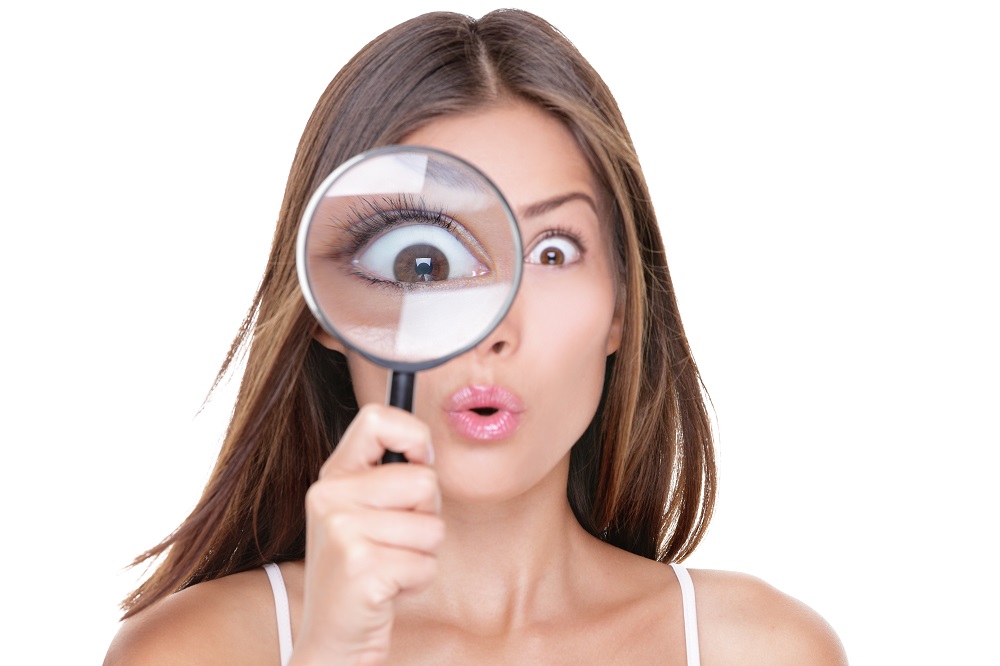Optometrists and ophthalmologists use a wide variety of techniques to examine your eyes during a comprehensive eye exam. These tests range from the simple, like having you read an eye chart, to the complex, such as using a high-powered lens to visualize the tiny structures inside of your eyes. A comprehensive eye exam can take an hour or more, depending on your doctor and the number and complexity of tests required to fully evaluate you. It is through these tests that you can determine if you may a candidate for a procedure such as LASIK or cataract surgery. For more information on cataract and LASIK surgery in Orange County, contact the experts at Advanced Eye Medical to schedule your eye exam.
Here is what you can expect during a comprehensive eye exam:
Color Blindness Test
A color vision screening is often performed early in the eye exam process. In addition to detecting color blindness, this can also alert your doctor to eye health defects that affect your color vision.
Cover Test
During this test, your doctor will cover each of your eyes individually and ask you to look across the room at a far object, then closer at a near object. By having you fixate on these two separate targets with each eye, your doctor can see weather the eye has to move in order to “pick up” the target. If it does have to move, this could indicate strabismus or a subtler binocular vision problem that could cause eye strain or “lazy eye.”
Ocular Motility (Eye Movement) Testing
These tests show how well your eyes can follow a moving target or move rapidly between two targets. The more common test is of smooth eye movement, or “pursuits.” Your doctor will have you hold your head still and follow a small light or other object from side to side using only your eyes. Less frequently, doctors may test quick eye movements, or “saccades,” by having you move your eyes back and forth between two objects placed with some space in between. Potential problems with eye movements are problems with eye strain, reading ability, and sports vision.
Stereopsis (Depth Perception) Test
The term “stereopsis” describes the way your two eyes team up to create depth perception as well as a 3-D view of the world. In one commonly used stereopsis test, you are asked to wear 3-D glasses while looking at a booklet of test patterns. The booklet will have images of shapes that appear closer and farther away, and you will be asked to identify which shape appears to be closest to you. If you can identify the correct shape, it means you have excellent eye-teaming ability.
Retinoscopy
This test is performed early in the exam to get an approximation of your eyeglass prescription. Your doctor will ask you to stare at the big “E” at the top of an eye chart. As you stare at the “E,” your eye doctor will shine a light at your eye and flip lenses in a machine in front of your eyes. This test estimates which lens powers will best correct your distance vision.
Refraction
While looking at an eye chart on the wall, the doctor presents you with various lenses to look through and asks which offers you the clearest view of the letters on the chart. This is how the doctor determines your exact eyeglass prescription.
Slit Lamp Exam
A slit lamp is a binocular microscope (or “biomicroscope”) that your eye doctor uses to examine the structures of your eye under high magnification. During the slit lamp exam, you will be asked to place your forehead and chin on rests on the front of the instrument. Your doctor will begin by examining the structures of the front of your eyes, including your eyelids, cornea, conjunctiva, iris, and lens.
With the help of a hand-held lens, your doctor may also use the slit lamp to examine structures located farther back in the eye, such as the retina and optic nerve.
A wide range of eye conditions and diseases can be detected with the slit lamp exam, including cataracts, macular degeneration, corneal ulcers and diabetic retinopathy.
Glaucoma Test
This is the “puff of air” test, technically known as non-contact tonometry, or NCT. Based on your eye’s resistance to the puff of air, the machine calculates your intraocular pressure (IOP). If you have high eye pressure, you may be at risk for or have glaucoma.
Pupil Dilation
Your doctor may use dilating eye drops to obtain a better view of your eyes’ internal structures. This allows for the most thorough evaluation of eye health. Make sure to bring sunglasses for the ride home, because you will be more sensitive to sunlight when your pupils are dilated.
Visual Field Test
In some cases, your doctor might check for blind spots, or scotomas, in your peripheral vision. These can be caused by eye diseases such as glaucoma, or brain damage from stroke or brain tumors.
Eye Exams and LASIK in Orange County
At Advanced Eye Medical, we have been helping patients with eye care in Mission Viejo, Laguna Niguel, Aliso Viejo, and throughout Orange County since 1982. Our team prides itself on the personal relationships we develop with each of our patients. Contact us for your personal eye exam and for information about receiving LASIK in Orange County.

